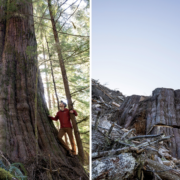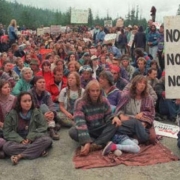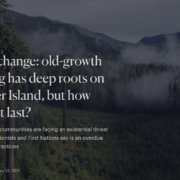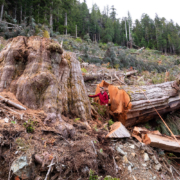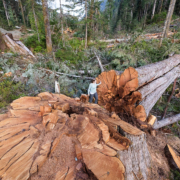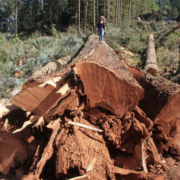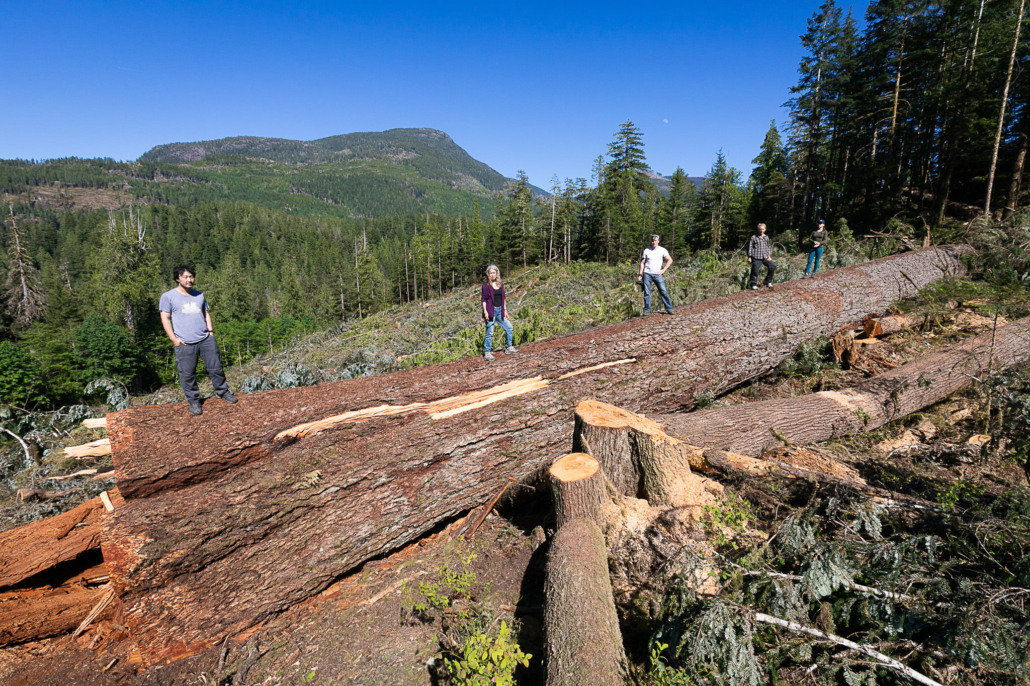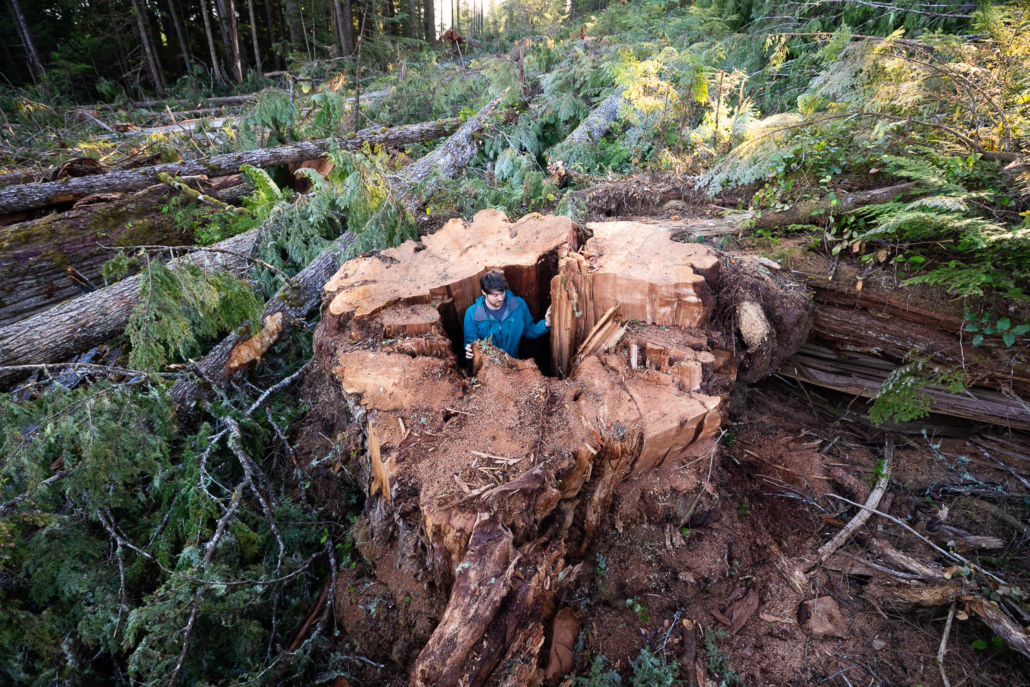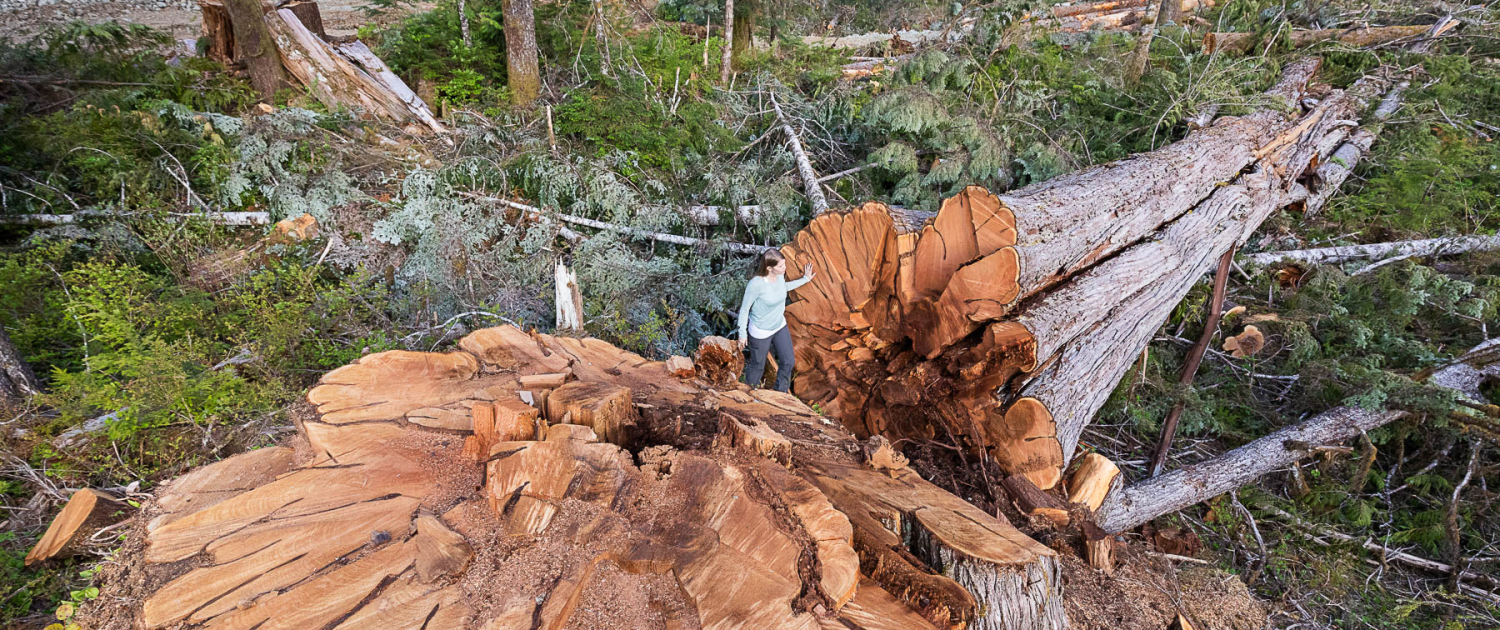 Oct 7 2019
Oct 7 2019BC Timber Sales Continues Old-Growth Logging in Nahmint Valley Despite Government Investigation Showing Nearly Two Decades of Non-Compliance
Victoria, BC – BC Timber Sales’ current and historic harvest plans for the Nahmint Valley have consistently failed to comply with the BC government’s own legally-binding land-use objectives, according to recently released reports from a Ministry of Forests investigation into old-growth logging in the Nahmint Valley near Port Alberni on Vancouver Island.
Documents obtained by the Ancient Forest Alliance (AFA) under a Freedom of Information request reveal that BCTS, the BC government’s own logging agency, not only misinterpreted legal objectives set out in the Vancouver Island Land Use Plan (VILUP) for the retention of old-growth forest in the Nahmint Valley, among other things, they also neglected to use readily available ecosystem data and best available science in their planning and miscalculated specific old-growth forest retention targets set out in the BC’s government’s Biodiversity Guidebook.
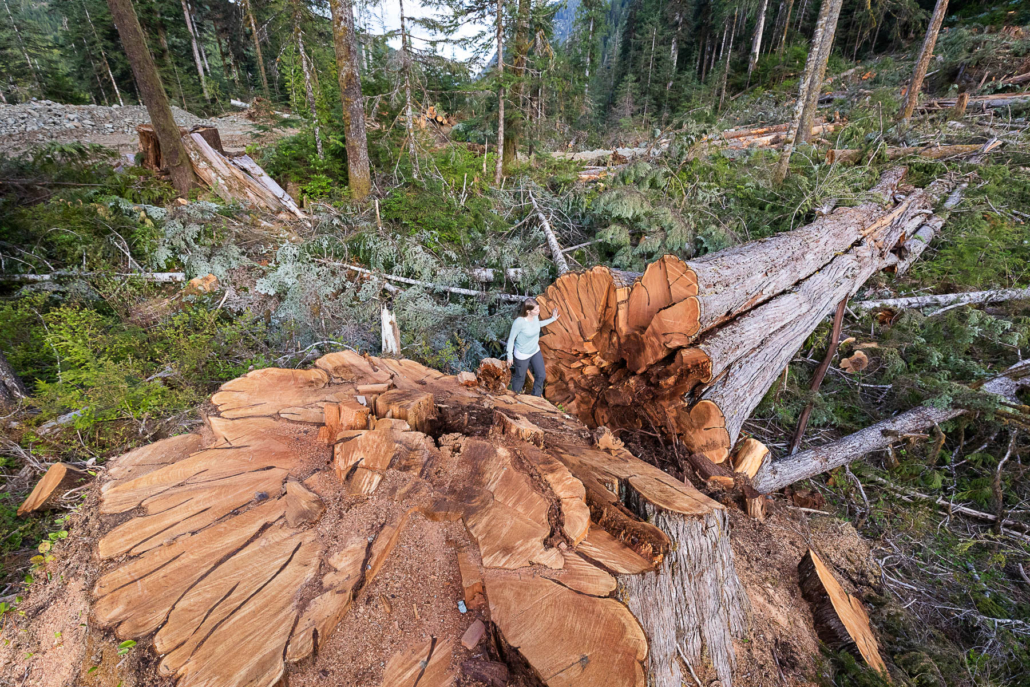
“The BC government is apparently failing to live up even to their own wholly inadequate standards for the protection of old-growth forests, which, after over a century of industrial logging, are endangered in large parts of BC, including on Vancouver Island,” stated Ancient Forest Alliance campaigner, Andrea Inness.
“As a result of BCTS’ non-compliance, too much old-growth has been and continues to be logged in the Nahmint Valley, even by the government’s own standards, and not enough of it has been protected to adequately represent the diversity of forest ecosystems in the valley or to avoid biodiversity loss. Sadly, though, this scenario is playing out in many parts of the province, even where logging is compliant, because BC’s old-growth forest retention targets are far too low. We’re therefore calling on the BC government to immediately prioritize the setting of new, science-based old-growth protection targets to protect what remains of BC’s ancient forests.”
The Forest Ministry’s investigation stemmed from a complaint filed by the AFA in June 2018 that raised concerns about the destructive logging of some of Canada’s biggest and oldest trees in the Nahmint Valley, located in Hupacasath and Tseshaht First Nations territory, including the felling of Canada’s ninth-widest Douglas-fir tree. The logging sparked widespread public outrage and criticism of BC Timber Sales (BCTS), the BC government’s logging agency responsible for auctioning off cutblocks in the valley.
In the 2000 Vancouver Island Summary Land Use Plan, the Nahmint Valley was identified as having particularly high biodiversity values and was thereby designated, by Ministerial Order, as a Special Management Zone in order to minimize development impacts.
“The Nahmint Valley is a unique and very special place,” stated Inness. “It was supposed to be managed differently than other forests, with emphasis placed on maintaining old-growth forests and biodiversity. These reports suggest the BC government is privileging the timber industry over biodiversity protection, recreation, wildlife and salmon habitat, and cultural heritage in the Nahmint, to the extent that they are willing to break their own rules.”
The investigation, conducted by the Forest Ministry’s Compliance and Enforcement Branch (CEB), also briefly reviewed past Forest Stewardship Plans for the Nahmint Valley and found “legacy compliance issues with timber harvesting in the Nahmint Valley” going back 18 years. As a result, and if left unresolved, the CEB asserts that “serious cumulative impacts may occur on the land base over time.”
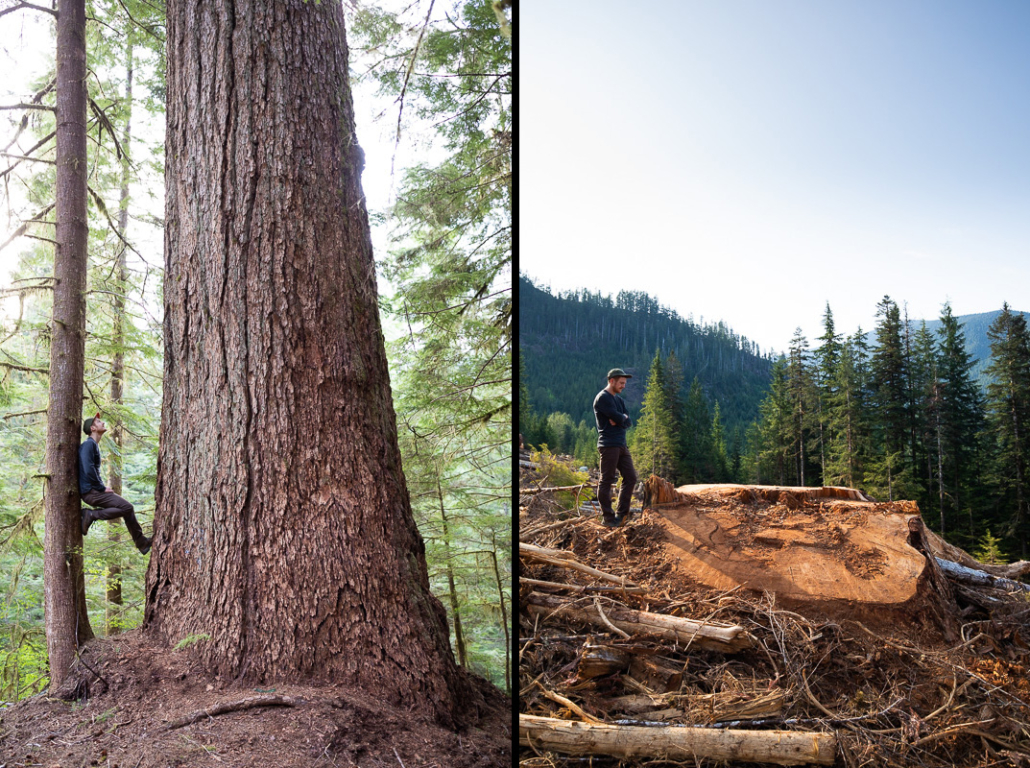
“These findings have enormous implications,” stated Ancient Forest Alliance campaigner and photographer, TJ Watt. “If this can happen in the Nahmint Valley, then it could be happening in any or all areas where BC Timber Sales operates. We just don’t know.”
Since the Nahmint investigation, the Forests Ministry has purportedly stripped the Compliance and Enforcement Branch of its authority to investigate BC Timber Sales, meaning that, while private companies can be investigated and penalized should they violate the law, BCTS will not be held to the same standard nor be accountable to the public.
In an August 2018 letter, written in response to the CEB’s initial investigation findings, BCTS argued that logging in the Nahmint Valley cannot be non-compliant with the government’s land-use objectives since the Nahmint Valley Forest Stewardship Plan was approved by a District Manager. However, as the CEB points out in its subsequent response, District Managers do not have the authority to override legal orders or government-set objectives and FSPs cannot be used as a shield to allow non-compliant logging to occur.
“This is indicative of a corrupt system,” said Watt. “BCTS clearly feel entitled to operate above the law and believe that publicly-agreed upon values and objectives for the Nahmint Valley are far less important than catering to the timber industry, no matter what the cost to BC’s ancient forests, wildlife, and communities.”
While minor changes were made to the Nahmint Valley Operating Plan following the AFA’s complaint, the CEB’s recommendations that logging in the Nahmint Valley immediately cease, that an amended Forest Stewardship Plan be prepared demonstrating how planning would adhere to VILUP in future, and that future harvesting plans be placed on hold, were all ignored by the ministry.
Meanwhile, old-growth logging in the Nahmint Valley continued throughout the investigation and carries on today, unhindered. In fact, at the time of the investigation’s conclusion in October 2018, over 400,000 cubic metres was planned to go to public tender for harvesting. The AFA has also recently analyzed BCTS’ Multi Year Development Plan for the Nahmint Valley and identified over 600 hectares of old-growth forest to be auctioned off in coming years under the current, non-compliant Forest Stewardship Plan.
The ministry also intends to legalize draft Old Growth Management Areas (OGMAs) by spring 2020, despite the ministry’s investigation having revealed the draft OGMAs are in violation of VILUP and “do not adequately address the old-growth retention targets needed to maintain landscape biodiversity.”
“Legalizing the OGMAs would essentially allow BCTS get away with years of non-compliant logging in the Nahmint Valley,” stated Inness. “But it’s not enough to ensure that future planning is compliant with BC’s outdated, pro-industry laws. There is an urgent need for sweeping changes to BC’s forest system, starting with legislation that prioritizes biodiversity and ecological integrity over timber supply.”
The Ancient Forest Alliance is calling on the BC government to immediately halt logging in old-growth forest “hotspots” of high conservation value, including the Nahmint Valley; use its authority over BCTS to quickly phase out issuance of old-growth timber sales and implement conservation solutions on BCTS-controlled lands; and introduce an ecosystem-based management approach to forestry throughout BC, with science-based targets for old-growth forest protection.
The AFA is also calling on the Province to scale-up its efforts to modernize land-use planning in partnership with First Nations, to pair that process with funding for the sustainable economic development and diversification of First Nations economies in lieu of old-growth logging, and to support the creation of Indigenous Protected and Conserved Areas. Finally, the Province must help to diversify forest-based communities and support the transition to a sustainable, value-added, second-growth forest sector.
The Forest Practices Board is also undertaking its own investigation into the AFA’s complaint about old-growth logging in the Nahmint Valley. The Board has previously stated they expect their investigation will be completed by the end of the year.
Documents obtained under the AFA’s Freedom of Information request can be accessed here:
See a timeline of events and summary of the investigative findings, prepared by the AFA.

